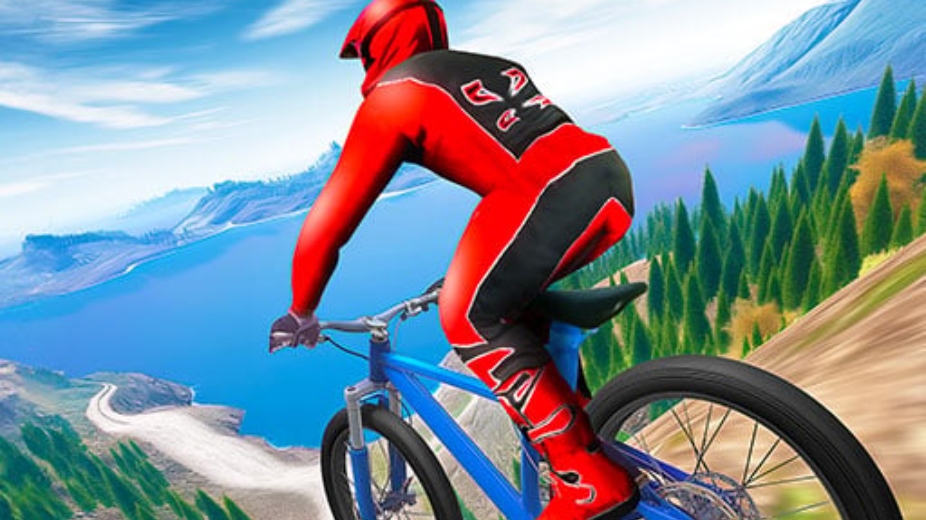Downhill racing isn’t just a sport; it’s a test of courage, control, and an adrenaline-pumping experience that brings riders face to face with the most extreme elements of nature. Riders downhill racing, whether on mountain bikes, longboards, or motorcycles, embodies the pursuit of speed, skill, and mastery over terrain that challenges even the most seasoned athletes.
The Essence of Downhill Racing
At its core, downhill racing is about descending from a high point to a lower one, using gravity as an accelerant while navigating treacherous paths filled with rocks, trees, sharp corners, and other obstacles. Riders must rely on precision, balance, and lightning-fast reflexes to navigate the course at blistering speeds. It’s a sport where both the mental and physical aspects are put to the test, requiring intense focus and a deep understanding of the track
Unlike other forms of racing that involve flat tracks or even terrain, downhill racing takes place on natural trails that can vary wildly in difficulty and conditions. The terrain is often unpredictable, with loose dirt, mud, and rocks making it even more challenging. What makes downhill racing exhilarating is the combination of these natural obstacles and the sheer speed riders achieve as they hurtle down the slopes.
The Bikes, Gear, and Setup
Downhill racing bikes are engineered for durability and control. These bikes are designed to handle the extreme stresses of downhill tracks, featuring heavy-duty frames, full-suspension systems, and powerful disc brakes. The tires are wide and grippy, providing the traction needed to maintain control at high speeds. Unlike traditional mountain bikes, downhill bikes have a more aggressive geometry, allowing riders to shift their weight and maneuver efficiently over challenging obstacles.
Safety is a paramount concern in downhill racing. Riders gear up with full-face helmets, body armor, and padded gloves to protect themselves from potential crashes. The high-risk nature of the sport means that injuries are common, but the right gear can mitigate some of that risk. Knee and elbow pads, neck braces, and reinforced clothing are also standard in a rider’s arsenal.
In addition to physical gear, mental preparation is just as crucial. Riders often walk the course before a race, visualizing each turn, drop, and obstacle. Knowing the track allows riders to anticipate challenges and adjust their riding style accordingly.
The Psychology of Downhill Racing
One of the most captivating aspects of downhill racing is the psychological challenge it presents. Speed can be intoxicating, but the dangers of losing control are very real. Overcoming fear and maintaining focus are key to excelling in this sport. Experienced riders learn to balance their desire for speed with the need for caution, finding that razor-thin line between aggression and control.
This mental aspect also involves dealing with the unexpected. In downhill racing, conditions can change rapidly—what starts as a dry track can turn into a slick, muddy mess after a sudden rain shower. Riders must be adaptable, making split-second decisions that could mean the difference between finishing the race and crashing out.
Famous Downhill Racing Events
Downhill racing has gained popularity across the globe, with major events drawing in both competitors and spectators from around the world. Here are a few of the most iconic races:
1. UCI Downhill World Cup: This prestigious series of downhill mountain bike races is a showcase of the sport’s best talent. Held in various locations around the world, the World Cup is the ultimate test for elite riders looking to prove themselves on the global stage.
2. Red Bull Hardline: Known as one of the most challenging downhill courses in the world, the Red Bull Hardline in Wales pushes riders to their limits with its massive jumps, steep drops, and technical sections. Only the bravest and most skilled riders dare to take on this course.
3. Crankworx: Crankworx is a festival of mountain biking that includes downhill racing as one of its main events. With races in locations like Whistler, New Zealand, and France, Crankworx has become a major event in the downhill racing calendar.
4. Megavalanche: This epic race takes place on the snow-covered slopes of the French Alps. Starting at the top of a glacier, riders descend over 2,600 meters to the valley floor, navigating snow, rocks, and dirt along the way.
The Community and Culture of Downhill Racing
Downhill racing has fostered a unique and tight-knit community of riders who share a passion for the sport. This culture values not only competitive spirit but also camaraderie and mutual respect. Riders often exchange tips, encourage each other, and celebrate each other’s achievements. Even at the highest levels of competition, there is a sense of unity and shared purpose among downhill racers.
Spectators play a big role in the atmosphere as well. Whether cheering from the sidelines or watching online, fans bring energy and excitement to every event. The shared thrill of seeing riders push the limits of what’s possible adds to the sport’s appeal.
Conclusion
Riders downhill racing is more than just a sport; it’s an art form that blends speed, skill, and courage. Whether you’re a rider or a spectator, the intensity of downhill racing captures the imagination and leaves a lasting impression. From the gear to the mental fortitude required, every aspect of downhill racing reflects the essence of adventure and the human spirit’s desire to push beyond the boundaries of the possible.

